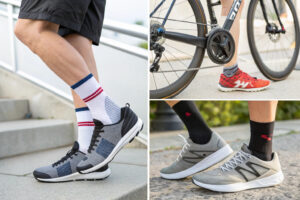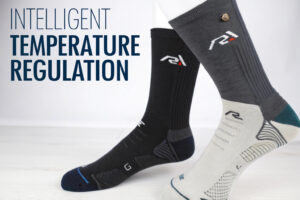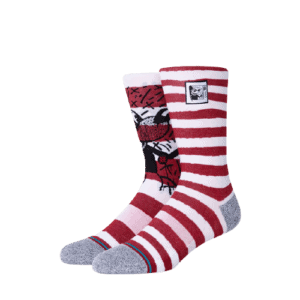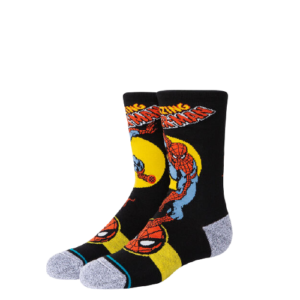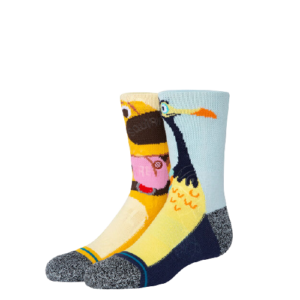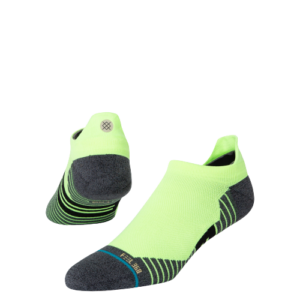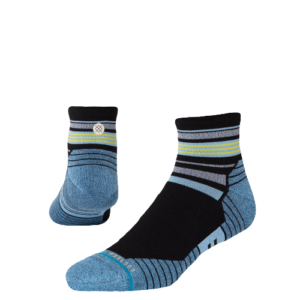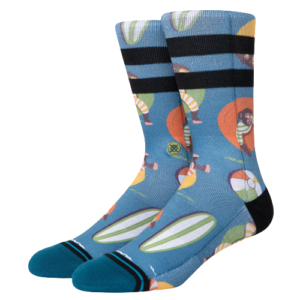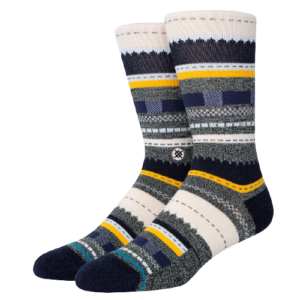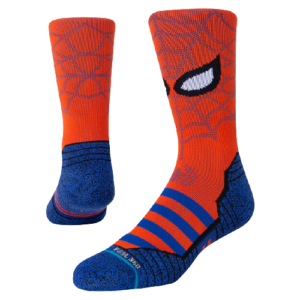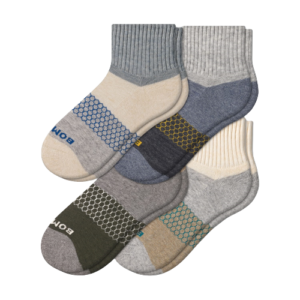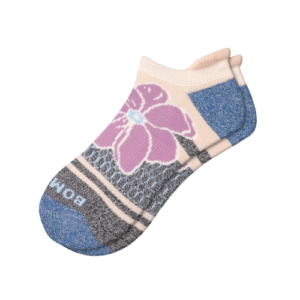As a socks manufacturer with over a decade of experience, I often hear clients ask how they can keep their customers comfortable in all seasons. The secret lies in temperature-regulating socks. These socks are engineered to maintain optimal foot temperature regardless of external weather conditions. They use advanced fabrics and construction techniques to provide warmth in winter and cooling in summer. This technology ensures all-day comfort and prevents common issues like sweaty feet or cold toes. For wholesalers, this means happier end-customers and fewer returns.
Temperature-regulating socks adapt to seasonal climate changes through smart fabric selection, specialized knitting techniques, and advanced textile technologies that create a microclimate around the foot. Key materials like Merino wool, bamboo viscose, and phase-change material (PCM) treated fibers work together to wick moisture, provide insulation, and actively manage heat transfer, ensuring optimal foot temperature in both winter cold and summer heat.
Understanding how these socks work can help you make better purchasing decisions for your retail business. The right temperature-regulating socks can become your best-selling items across all seasons. Let me break down the science and benefits into four key areas that matter most to distributors and retailers.
What Materials Make Socks Temperature-Regulating?
The foundation of any high-performance temperature-regulating sock begins with material selection. Not all fibers are created equal when it comes to thermal regulation. Through years of testing in our CNAS-certified lab, we've identified specific materials that consistently outperform others in maintaining comfortable foot temperatures across varying climate conditions.
Temperature-regulating socks primarily utilize natural fibers like Merino wool, bamboo viscose, and specialty synthetic blends incorporating phase-change materials (PCM). Merino wool's natural crimp creates insulating air pockets, while bamboo's micro-gaps enhance moisture-wicking, and PCM-treated fibers actively absorb or release heat as needed to maintain a consistent temperature range around the foot.

Why Does Merino Wool Work Year-Round?
Merino wool represents the gold standard in natural temperature regulation, which is why we incorporate it into many of our best-selling socks. Unlike traditional wool, Merino has exceptionally fine fibers that feel soft against the skin while providing superior thermal properties. The secret lies in the fiber's natural structure – each strand contains tiny air pockets that trap warmth in cold conditions yet allow breathability when it's warm. This natural thermoregulation means the same pair of Merino socks can comfortably serve your customers in both 30°F and 70°F weather.
Beyond its temperature-adapting capabilities, Merino wool offers additional benefits that reduce returns and increase customer satisfaction. The fiber's natural wicking ability pulls moisture away from the skin, keeping feet dry in summer and preventing chill in winter. Unlike cotton, which loses insulation value when wet, Merino maintains its thermal properties even when damp. Furthermore, Merino possesses natural antibacterial properties that reduce odor, allowing for multiple wears between washes – a significant selling point for your outdoor and travel customers.
How Do Phase-Change Materials Work in Socks?
Phase-change materials (PCM) represent the cutting edge of active temperature management in socks. These microscopic, engineered substances are embedded into fibers or applied as fabric coatings, where they continuously absorb, store, and release heat energy. When foot temperature rises above a specific threshold (typically around 80-85°F), the PCM particles melt, absorbing excess heat. Conversely, when temperatures drop, the particles solidify, releasing stored warmth back to the feet.
The implementation of PCM technology transforms socks from passive barriers to active temperature-management systems. In our manufacturing process, we use microencapsulated PCMs that withstand multiple washes while maintaining their efficacy. This technology proves particularly valuable for customers experiencing dramatic temperature shifts throughout their day, such as workers moving between climate-controlled offices and outdoor environments. The active temperature regulation provided by PCM-enhanced socks justifies premium pricing while solving genuine comfort issues across seasons.
How Do Moisture-Wicking Technologies Complement Thermal Regulation?
Moisture management represents the unsung hero of effective temperature regulation in socks. Without proper wicking, even the most advanced insulating materials fail because trapped moisture conducts heat away from the body 25 times faster than dry air. Through rigorous testing in our laboratory, we've optimized construction techniques that maximize moisture transport away from the skin.
Moisture-wicking technologies complement thermal regulation by moving sweat away from the skin to the sock's outer layers where it can evaporate. This process prevents the chilling effect of damp fabric in cold weather and the overheating caused by trapped humidity in warm conditions, effectively supporting the sock's primary temperature-regulating mechanisms throughout seasonal changes.

What Construction Methods Enhance Moisture Movement?
Advanced knitting techniques significantly impact a sock's moisture-wicking performance beyond just material selection. We employ specific construction methods that create capillary action within the fabric, actively pulling moisture outward. The most effective approach combines multiple knit structures within the same sock – tighter knitting in direct contact areas with more open, breathable patterns along the instep and shin. This strategic construction creates moisture transport channels that work with the body's natural thermoregulation.
Our manufacturing process specifically addresses common failure points in moisture management. We implement seamless toe closures that eliminate bunching while maintaining wicking continuity, and we engineer variable-density knitting that places maximum moisture movement precisely where feet perspire most. Additionally, our proprietary blended yarn systems combine hydrophobic and hydrophilic fibers to create directional wicking – pulling moisture from the skin side to the exterior where evaporation occurs rapidly, regardless of outdoor humidity levels.
How Does Breathability Impact Thermal Comfort?
Breathability completes the moisture management system by facilitating the final stage of evaporation. Even with excellent wicking, socks cannot regulate temperature effectively if moisture accumulates in the fabric. We measure breathability in our lab using standardized tests for air permeability and vapor transmission rate, allowing us to engineer socks with optimized airflow without compromising durability or insulation.
The relationship between breathability and thermal regulation becomes particularly crucial during seasonal transitions when temperatures fluctuate dramatically within single days. Our solution incorporates strategic mesh zones in high-heat areas while maintaining insulation where needed. This targeted approach prevents the "greenhouse effect" that plagues many thermal socks, where heat becomes trapped alongside moisture. For your customers, this translates to consistent comfort whether they're facing unseasonably warm winter days or unexpectedly cool summer evenings – reducing season-specific inventory requirements while increasing customer satisfaction year-round.
Are There Different Regulations for Winter vs Summer Socks?
Season-optimized socks employ distinct engineering approaches to address specific climatic challenges. While many temperature-regulating socks work across seasons, maximum performance in extreme conditions requires specialized designs. From our experience supplying retailers in diverse climates from Scandinavian winters to Middle Eastern summers, we've developed clear differentiators between winter-focused and summer-optimized socks.
Winter socks prioritize heat retention through thicker construction, dense insulating fibers, and wind-resistant exteriors, while summer socks emphasize cooling through lightweight, breathable fabrics, enhanced moisture evaporation, and UV protection. However, true four-season socks balance both approaches through strategic material combinations and zone-specific knitting techniques that adapt to changing conditions.

What Specific Features Define Winter Socks?
Winter socks incorporate multiple specialized features that work together to combat cold exposure. Beyond simply using thicker materials, we engineer winter socks with specific cold-weather technologies including brushed inner linings that trap warm air, tighter knit structures that block wind penetration, and strategic cushioning that provides insulation without bulk. These socks typically feature higher natural fiber content, particularly Merino wool blends with elevated loft for superior air trapping.
The most effective winter socks also address the reality that feet experience different temperature zones even in cold conditions. Our manufacturing process implements graduated insulation – thicker cushioning in toes and heels where heat loss occurs most rapidly, while maintaining moderate thickness through the instep to prevent constriction. Additionally, we integrate moisture-wicking winter blends that manage perspiration without compromising warmth, recognizing that feet can still sweat in freezing temperatures, creating dangerous chilling when activity levels decrease.
How Are Summer Socks Engineered Differently?
Summer sock engineering focuses primarily on heat dissipation and moisture management. Rather than simply making thinner socks, we design summer-specific models with open-knit mesh panels that maximize airflow, lighter-weight yarns that dry rapidly, and specialized finishes that reflect rather than absorb solar radiation. The best summer socks also incorporate UPF (Ultraviolet Protection Factor) properties, providing sun protection equivalent to SPF 30+ for outdoor activities.
Our summer sock designs address the unique challenge of keeping feet cool without sacrificing protection or durability. We use advanced synthetic blends that resist abrasion despite lighter construction, and we position reinforced zones only in high-wear areas to minimize overall fabric density. The result is socks that feel noticeably cooler while maintaining the durability your customers expect. For retailers, this specialization means you can offer purpose-built solutions that genuinely outperform generic "all-season" options during temperature extremes, building customer loyalty and repeat business.
Can Socks Truly Adapt to Rapid Temperature Shifts?
The ultimate challenge for temperature-regulating socks lies in handling sudden environmental changes, such as moving from air-conditioned buildings to summer heat or transitioning from warm interiors to winter cold. Through our work with outdoor professionals, athletes, and occupational workers, we've developed socks that genuinely adapt to these rapid shifts rather than simply providing compromise performance.
Advanced temperature-adapting socks effectively manage rapid thermal shifts through multiple simultaneous technologies including phase-change materials that buffer temperature fluctuations, responsive fibers that change structure with heat, and intelligent construction that ventilates during activity while insulating during rest periods. These layered approaches create socks that dynamically recalibrate their thermal properties as environmental conditions change.

What Technologies Enable Rapid Adaptation?
The most effective rapid-adaptation technologies work on different timeframes to address both immediate and gradual temperature changes. Phase-change materials provide the first line of defense, reacting within seconds to temperature shifts at the skin surface. Meanwhile, responsive fibers like certain advanced moisture-management fabrics change their wicking properties based on humidity levels, increasing evaporation rates as activity levels rise. Finally, strategic construction creates micro-ventilation zones that automatically enhance airflow during movement.
Our manufacturing process combines these technologies in ways that create genuine adaptive performance. For example, we position PCM treatments primarily in the footbed where temperature sensors are most concentrated, while placing responsive fibers through the mid-foot where friction generates heat, and reserving ventilation zones for high-flex areas. This multi-layered approach means your customers don't need to choose between winter warmth and summer breathability – they get both in the same sock, automatically adjusting throughout the day and across seasons.
How Does Sock Fit Impact Thermal Regulation?
Proper fit represents the often-overlooked factor in effective temperature regulation, regardless of technological innovations. Even the most advanced temperature-regulating socks cannot perform optimally if they're too tight (restricting circulation) or too loose (creating friction heat). We've developed specific sizing protocols that account not just for foot length but also for volume, ensuring our socks maintain consistent contact without compression.
The relationship between fit and thermal performance extends beyond basic sizing. We engineer specific ergonomic fit elements including articulated toe boxes that accommodate natural splay during weight-bearing, graduated compression that enhances circulation without constriction, and seamless transitions that prevent pressure points. For your customers, this attention to fit details means the temperature-regulating technologies perform as intended throughout the sock's lifespan, maintaining adaptive capabilities wash after wash while preventing the hot spots and blisters that undermine comfort in changing conditions.
Conclusion
Temperature-regulating socks represent a significant advancement in footwear comfort, utilizing smart materials, moisture management technologies, and specialized constructions to maintain optimal foot temperature across seasons. From Merino wool's natural adaptability to PCM's active thermal buffering, these technologies work together to create socks that genuinely respond to environmental conditions. For distributors and retailers, this means products that satisfy customers year-round, reduce seasonality in inventory planning, and command premium pricing through demonstrable performance benefits.
The future of sock technology continues to evolve toward even more responsive systems that anticipate rather than simply react to temperature changes. As manufacturers, we're investing in next-generation materials that offer enhanced sustainability alongside improved performance, ensuring that temperature regulation doesn't come at an environmental cost. For businesses looking to differentiate their offerings in a competitive market, these advanced socks represent a growing category with exceptional customer loyalty and repeat purchase potential.
If you're looking to develop your own line of temperature-regulating socks or expand your current assortment, our expertise in functional sock manufacturing can help you create products that stand out in the market. Contact our Business Director Elaine at elaine@fumaoclothing.com to discuss how we can partner to develop socks that keep your customers comfortable through every season change.



